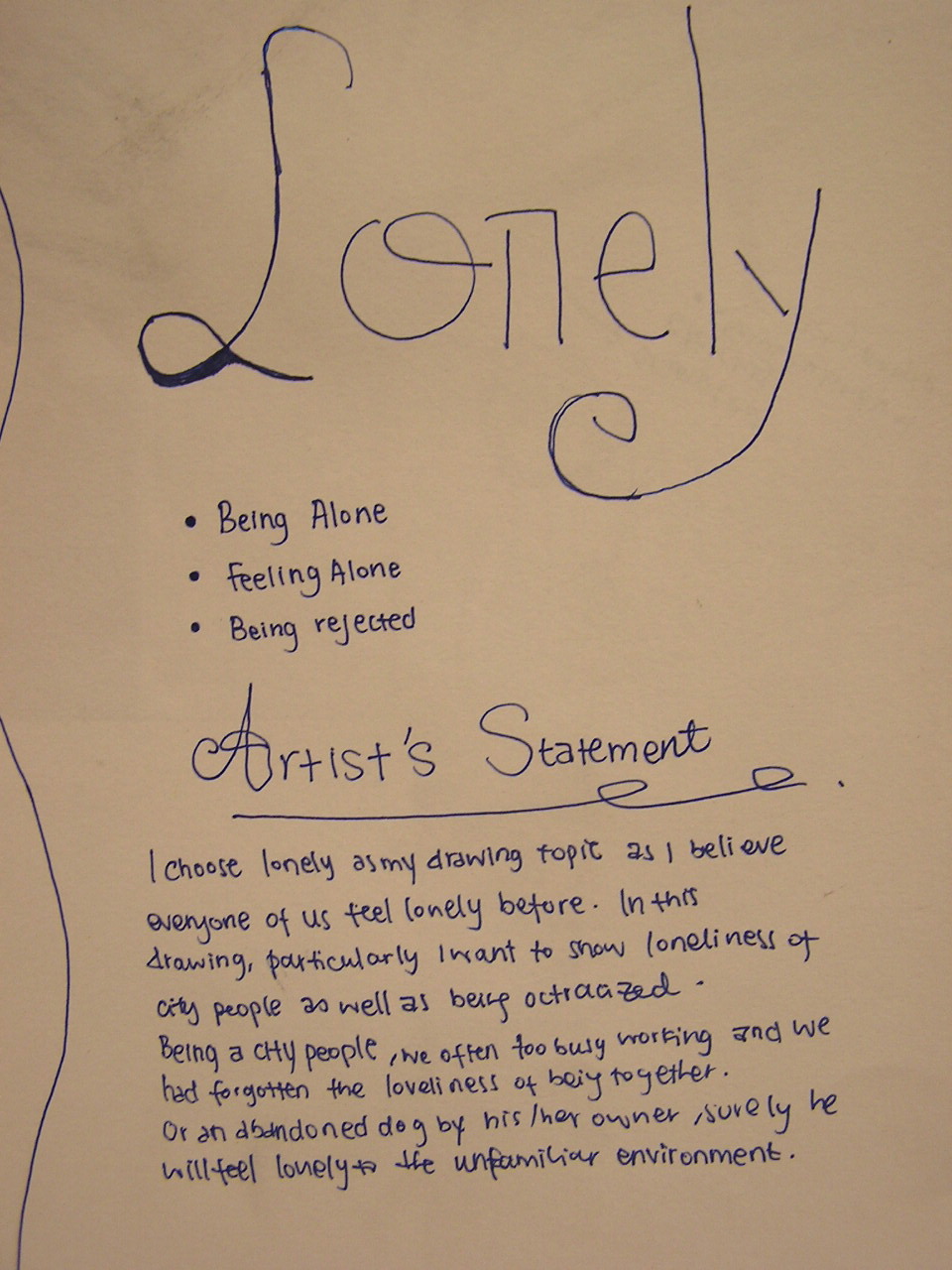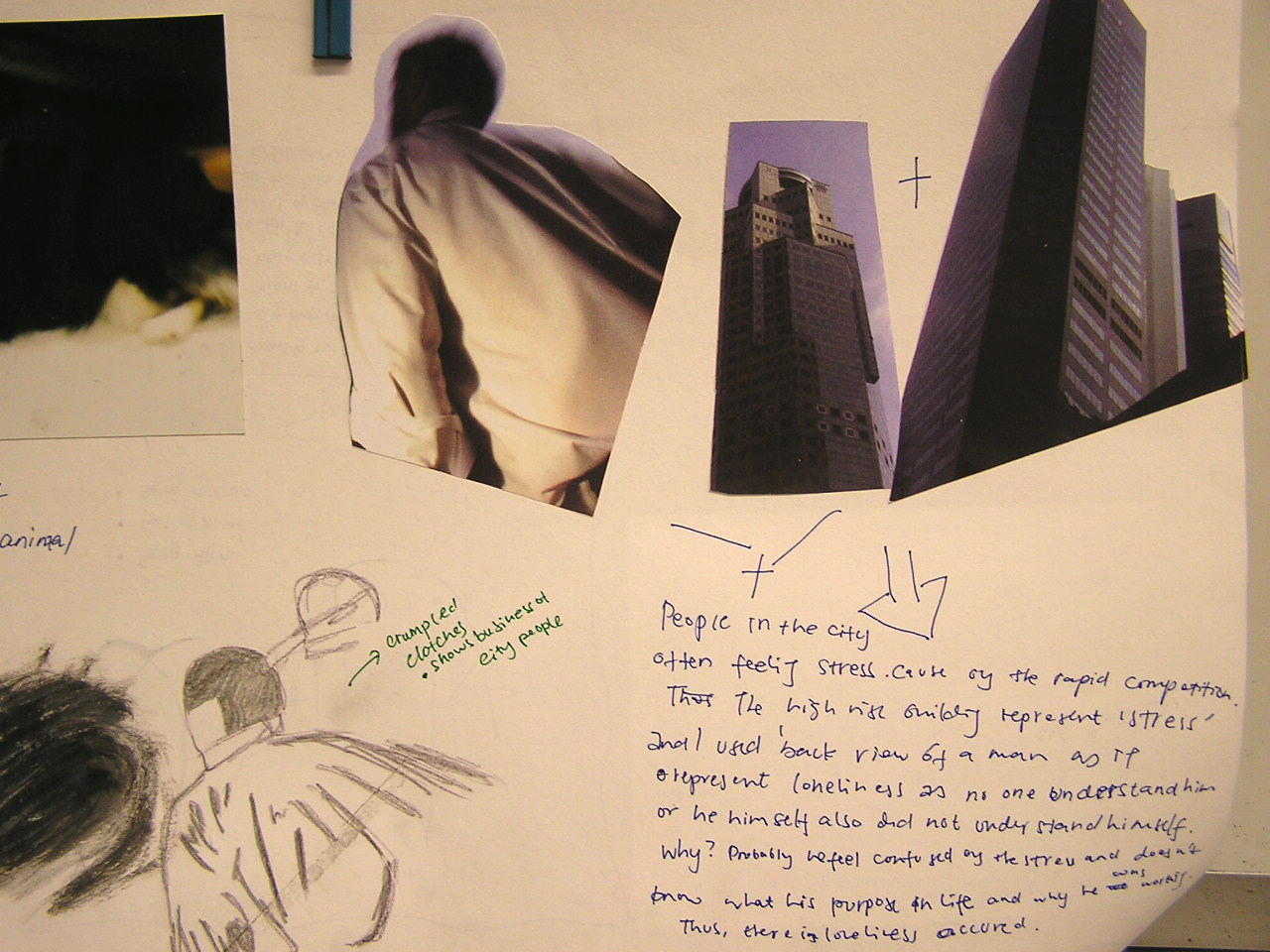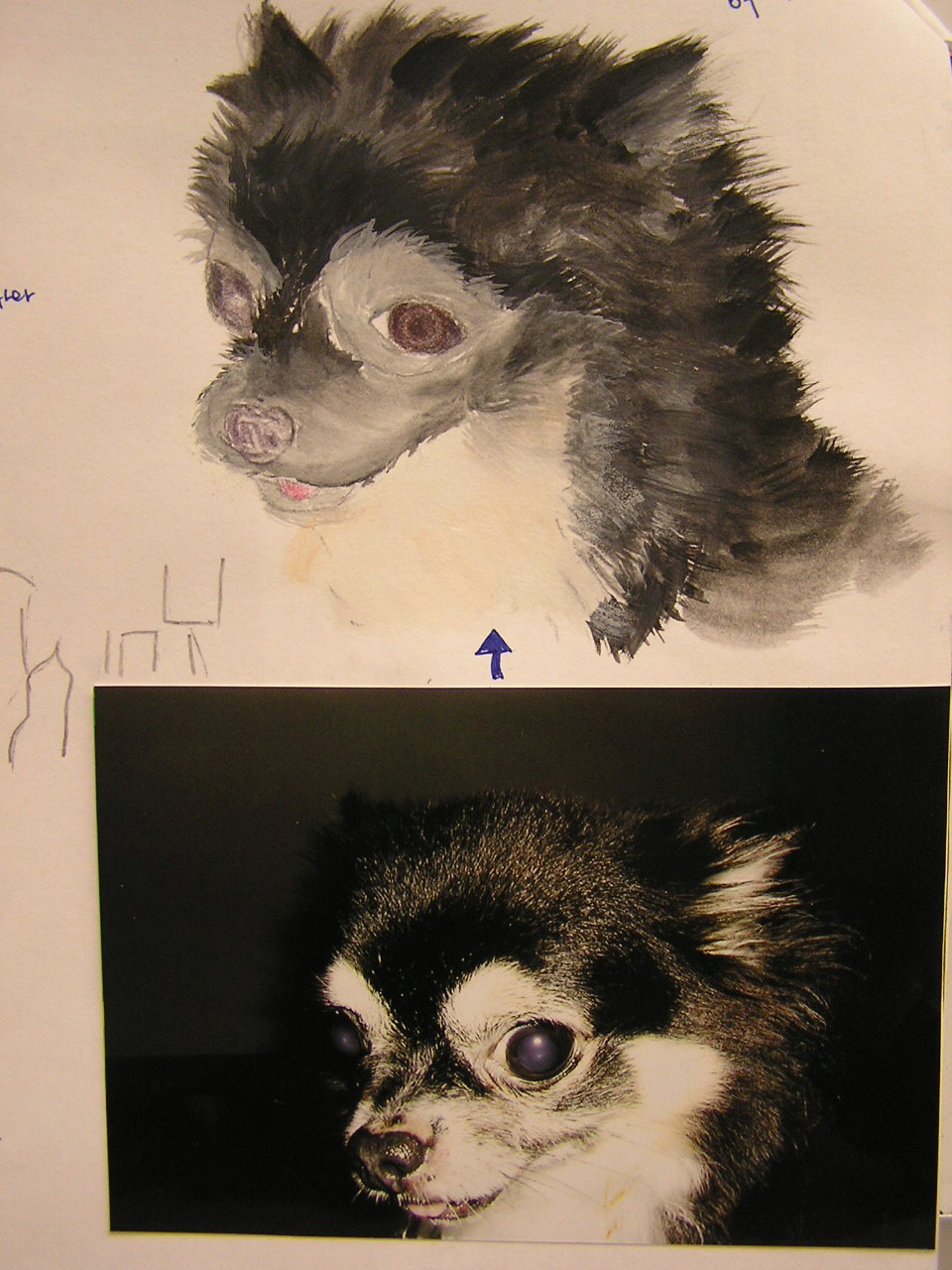
 This student looked at "lonliness" from the view that places,
This student looked at "lonliness" from the view that places, situations and even animals can make you lonely. For
example, a lonely day at the beach, working in the city can make you feel alone,
an abandoned dog in a dark stairwell.



 Also the idea that bare feet represent the honest soul of a pitiful human being.
Also the idea that bare feet represent the honest soul of a pitiful human being.